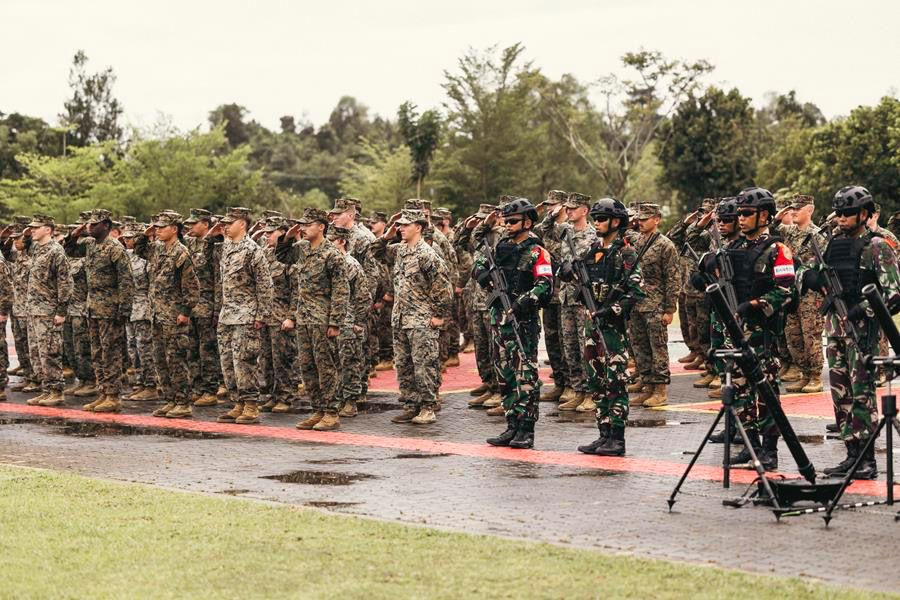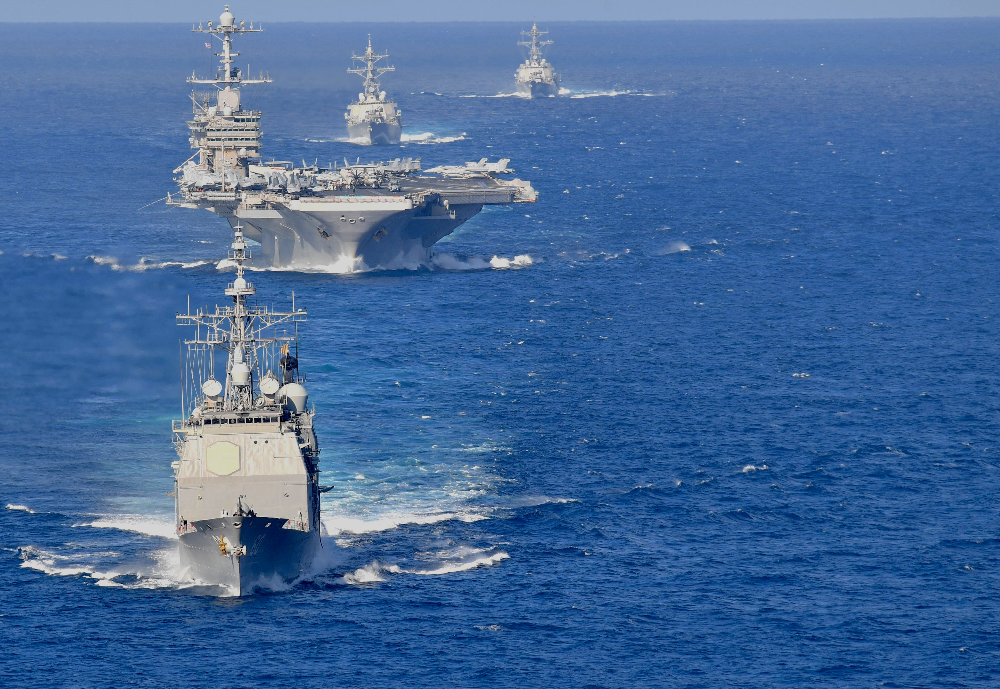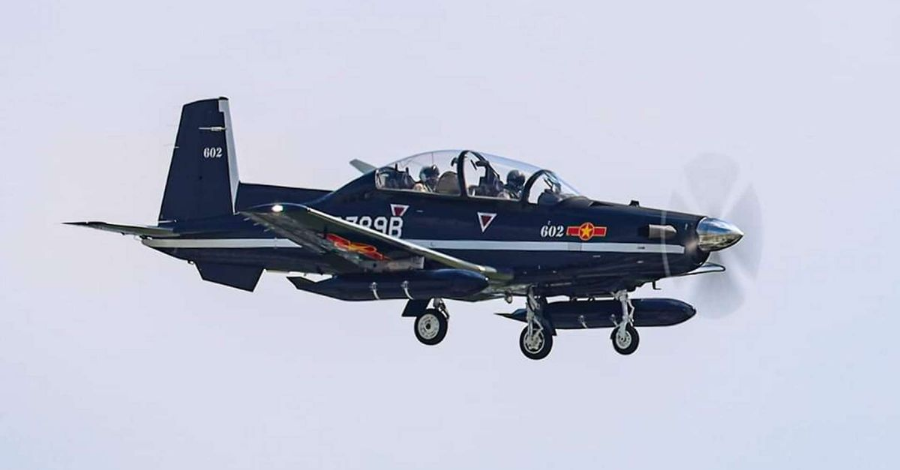
Honoring the Mission: A Red Friday Tribute to Our Deployed Troops
Today, on this Red Friday, we pause to remember and honor the selfless dedication of our deployed U.S. service members. Across the globe, these brave men and women embody the values of sacrifice and service, ensuring peace, stability, and security. From naval deployments to air force collaborations and community-building initiatives, their efforts resonate deeply with those who proudly wear red to show support every Friday.
This week, our troops demonstrated remarkable adaptability and resilience. The USS Abraham Lincoln (CVN-72) transitioned from the Middle East to the U.S. 7th Fleet, while the Harry S. Truman Carrier Strike Group advanced toward U.S. Central Command, preparing for vital operations such as Operation Prosperity Guardian. These movements underscore the Navy’s dynamic ability to meet global challenges while maintaining regional stability.
On land, in Indonesia, U.S. Marines concluded Keris Marine Exercise 2024 alongside their Indonesian counterparts, furthering military interoperability and showcasing the strength of international partnerships. These exercises emphasized shared learning, from drone-assisted mortar fire to coastal defense strategies, proving that our deployed forces not only protect but also build lasting alliances.
Meanwhile, in Vietnam, the delivery of the first T-6C Texan II aircraft to the Vietnam Air Defence Air Force marked a historic step in advancing regional airpower capabilities. This collaboration demonstrates the U.S. Air Force’s commitment to modernization and peacebuilding efforts within the Indo-Pacific region.
Closer to home, Camp Zama hosted the “Yakiniku and Conversation” dinner, an event fostering family resilience among military personnel. Initiatives like these remind us of the importance of maintaining strong relationships and open communication among those serving and their families—values that deployed troops carry with them even when far from home.
On this Red Friday, we salute all who serve and deploy, whether they are at sea, in the air, or on foreign soil. Let us wear red today as a symbol of our gratitude and a commitment to Remember Everyone Deployed. They represent the heart and strength of our nation, and their mission is our collective responsibility to support.
Keris MAREX 2024: U.S. and Indonesian Marines Forge Stronger Ties

BATAM, Indonesia – On Nov. 19, U.S. Marines from the Marine Rotational Force – Southeast Asia (MRF-SEA) and Indonesia’s 10th Marine Infantry Battalion (KORMAR) concluded the Keris Marine Exercise (MAREX) 2024 with a ceremony at Yonif 10 Marinir in Batam. This annual exercise fosters interoperability, builds partnerships, and enhances security in the Indo-Pacific.
Strengthening Military Ties Across Two Phases
Keris MAREX 2024 was conducted in two distinct phases at Indonesian Marine Corps bases on Batam and Singkep islands.
The first phase in Batam focused on knowledge sharing and skill development. Both U.S. and Indonesian Marines participated in intensive training, covering topics such as:
- Joint staff-level operational planning,
- Mortar and machine gun exercises,
- Jungle survival techniques.
Leaders from both forces collaborated to create a coastal defense plan to counter a simulated amphibious landing on Singkep Island. This experience deepened the understanding of each nation’s military processes and enhanced their ability to work cohesively in real-world scenarios.
Innovation and Tactical Mastery on Singkep Island
The second phase brought over 100 U.S. Marines to Singkep, where the bilateral forces conducted field exercises in a challenging environment. The exercises included combat patrolling, ambush tactics, casualty evacuations, and marksmanship training.
A groundbreaking aspect of this phase was the introduction of drones to observe and adjust mortar fire—an innovation for the Indonesian Marine Corps. This historic achievement demonstrated the advancement of their indirect fire capabilities under U.S. guidance.
Leaders Reflect on the Exercise’s Success
“The 10th KORMAR’s professionalism and their ability to integrate with our operational planning were pivotal to this exercise’s success,” said U.S. Marine Lt. Col. Thomas Vallely, operations officer for MRF-SEA. “Their efforts greatly enhanced our mutual understanding and preparedness.”
Col. Stuart W. Glenn, commanding officer of MRF-SEA, emphasized the broader significance of the exercise: “It was inspiring to see our Marines and Indonesian partners develop plans and execute operations with such intensity and focus. These collaborations strengthen our ability to address regional challenges together.”
A Commitment to Regional Security
Keris MAREX 2024 highlighted the enduring partnership between U.S. and Indonesian Marines, contributing to stability and security in the Indo-Pacific region. Through shared innovation, tactical excellence, and collaborative planning, this exercise demonstrated the critical role of multinational cooperation in addressing global security concerns.
U.S. Navy Carrier Deployments: Strategic Shifts and Updates

Carrier Movements
The USS Abraham Lincoln (CVN-72) has entered the U.S. 7th Fleet, leaving the Middle East without a carrier for only the second time in over a year. This follows the Harry S. Truman Carrier Strike Group’s positioning in the Eastern Atlantic en route to the Mediterranean Sea, with expectations to continue to U.S. Central Command (CENTCOM) for Operation Prosperity Guardian, a mission to protect merchant shipping.
Previously, the USS Theodore Roosevelt (CVN-73) relieved the USS Dwight D. Eisenhower (CVN-69) in June, marking a similar carrier absence in the Middle East. The Abraham Lincoln later arrived in the region in August, overlapping briefly with the Theodore Roosevelt before its departure in September.
Strategic Adjustments
The Navy’s decision to move West Coast-based carrier strike groups to the Middle East demonstrates its ability to surge forces as needed. Since December 2021, East Coast carriers have maintained a presence in the Eastern Mediterranean in response to rising tensions, including Russia’s invasion of Ukraine in early 2022 and recent events such as Hamas’ October 7, 2023, attack on Israel and Houthi assaults on Red Sea shipping in November.
As the Abraham Lincoln exits the region, the Department of Defense has bolstered the area with additional destroyers and aircraft. Currently, two independently deployed destroyers operate in the Mediterranean and two in the Red Sea.
Pacific Deployments
On Monday, the Carl Vinson Carrier Strike Group deployed from California for a Pacific mission. The USS Carl Vinson (CVN-70) recently completed operations in the Rim of the Pacific 2024 exercise and has since undertaken short sustainment cruises off the California coast. Details regarding the length of its current deployment remain unclear.
Forward Presence in Japan
Meanwhile, the Navy is finalizing the transfer of the USS George Washington (CVN-73) to its new homeport in Yokosuka, Japan. Over recent days, the Carrier Air Wing 5 squadrons have transitioned to their home bases in Japan, marking the near completion of this strategic move.
These adjustments underscore the U.S. Navy’s adaptability in meeting global demands while maintaining a robust presence in critical regions.
Milestone in U.S.-Vietnam Defense Relations: Delivery of First T-6C Texan II Aircraft

Pacific Air Forces Headquarters –
A historic moment unfolded on Nov. 20, 2024, as the Vietnam Air Defence Air Force (ADAF) received its first three T-6C Texan II aircraft in a ceremony attended by General Kevin Schneider, commander of Pacific Air Forces. This delivery marks a significant step in enhancing Vietnam’s airpower capabilities and strengthening U.S.-Vietnam defense cooperation.
The T-6C Texan II, a state-of-the-art military trainer, is the cornerstone of Vietnam ADAF’s pilot training modernization at Phan Thiet Air Base. With a total of 12 aircraft scheduled for delivery by 2025, the program underscores a shared commitment to advancing regional peace and security.
“Today’s delivery of the first T-6 aircraft symbolizes our dedication to assisting Vietnam in its air force modernization efforts,” said General Schneider. “This achievement reflects our mutual commitment to peace and upholding the rule of law in the region.”
The addition of the T-6C aircraft not only enhances Vietnam’s pilot training capabilities but also prepares its air force to address diverse security challenges. The collaboration bolsters Vietnam’s defense resilience and strengthens ties with international partners to ensure regional stability.
“With these aircraft and Vietnam’s skilled forces, we, alongside the United States and our global allies, will continue promoting peace and stability,” Schneider added. “This partnership ensures Vietnam is better equipped to deter potential threats.”
The U.S.-Vietnam defense relationship is rooted in shared security goals and respect for international norms. By aligning with Vietnam’s specific defense needs, this collaboration reinforces regional security while contributing to global peace.
The delivery of the T-6C Texan II aircraft signifies a milestone in the evolving partnership between the two nations, fostering a foundation for continued cooperation and mutual growth in defense capabilities.
Love Project Strengthens Relationships at Camp Zama Through Yakiniku Night

CAMP ZAMA, Japan — On November 15, 2024, U.S. Army Garrison Japan hosted a special evening event aimed at fostering communication and strengthening bonds among couples within the community. The “Yakiniku and Conversation” dinner, held at the Camp Zama chapel courtyard, was part of the ongoing “Love Project,” a series of events designed to promote family resilience and wellness.
Jointly organized by the Army Community Service (ACS) Family Advocacy Program and the Religious Support Office, the event provided a relaxed and intimate setting where couples could connect meaningfully. Candlelit tables, set apart to encourage one-on-one discussions, featured electric grills for attendees to prepare their yakiniku, or grilled meat, together.
Strengthening Relationships with the Gottman Method
Chaplain (Lt. Col.) Damon Saxton and Jennifer Luera, a Family Advocacy Program specialist, spearheaded the initiative, drawing inspiration from the Gottman Institute’s renowned “Gottman Method” for couples’ therapy. Couples were provided digital tools, including discussion prompts and relationship-strengthening exercises, to facilitate meaningful conversations during the dinner.
“It’s important to get to know your partner deeply — their likes, dislikes, fears, and dreams,” Saxton said during his opening remarks. “Building a ‘love map’ is an essential part of strengthening relationships, and tonight’s event is designed to help couples do just that.”
Luera emphasized the importance of communication as the foundation of healthy relationships. “Our goal is to equip couples with effective communication tools to reduce relationship risk factors and enhance community well-being,” she explained.
Cultural Connection Through Yakiniku
The idea for a yakiniku-themed evening stemmed from a desire to tie the event to Japanese culture. Nicole Venable, another Family Advocacy Program specialist, noted that using electric grills from the ACS lending locker made yakiniku the perfect choice.
“Participants have been overwhelmingly positive about Love Project events,” Venable said. “They enjoy the combination of fun and learning, which strengthens their relationships in meaningful ways.”
Community Feedback and Impact
Attendees Matt and Tara Rojas, both Department of the Army civilian employees, praised the event for its ability to foster resilience and provide practical tools for strengthening relationships.
“Events like this allow couples to step away from daily stresses and focus on each other,” Matt said. “Even after 23 years of marriage, we found there’s still more to learn about each other.”
Tara echoed his sentiments, noting how Love Project events encourage communication and awareness. “Sometimes, it’s not on our radar to communicate effectively with our spouse, but these events bring it to the forefront,” she said.
Building a Resilient Community
The “Yakiniku and Conversation” dinner highlighted the importance of fostering strong family and community bonds. By blending cultural experiences with evidence-based relationship tools, the Love Project continues to offer meaningful opportunities for couples to connect, learn, and grow together.
With its innovative approach and positive reception, the Love Project remains a cornerstone of community-building efforts at Camp Zama.
